

Navratri and Durga Puja are two of the longest-celebrated Hindu festivals. While both have different cultural and regional variations, they both have a theme of the victory of good over evil and the worship of Goddess Shakti.
Navratri is dedicated to the worship of Durga in her various forms. It spans nine nights and is divided into three sets of three days each, throughout which different facets of the goddess are worshipped.
History of Navratri and Durga Puja
Several myths and legends are associated with celebrating this Navratri Festival.
According to a legend, Mahishasura, the demon, worshipped Shiva and obtained the boon of eternity. So, he started harassing people and set out to win seven Lokas. Intimated by his power, all the Devas requested Shiva to tame the demon. Then Brahma, Vishnu, and Shiva united their powers and created Goddess Durga. Mahishasura was mesmerized by her beauty and approached her for marriage.
Goddess Durga said that the demon Mahishasura should win over her in a duel. The duel continued for 9 nights, and at the end of the 9th night, Goddess Durga killed the demon. So, the nine nights are called Navratri. The tenth day is celebrated as Vijayadashmi or Dusshera.
Another legend states that King Daksha had a beautiful daughter, Uma, who wanted to marry Lord Shiva. So, she worshipped Shiva and pleased him. Shiva married her. Once, she visited her parents in a Yagna. Here, Daksha insulted Shiva, and Uma jumped into the agnikund. Hereafter, she was known as Sati. Sati was reborn, and peace was restored between her and her parents. Then, she married Shiva again. It is believed that the goddess came to stay with her parents for nine days. if you want to know about the dates of the Navratri or Durga Puja, know it here
In ancient times, Kshatriyas barred themselves from participating in any war during the monsoon. After the monsoons passed, they started afresh with wars. So, before their war journey, these Kshatriyas worshipped different forms of Devi for nine days, which is celebrated as Navratri.
Another legend states that Lord Rama, who wanted to release Sita from Ravana's clutches, prayed to Goddess Durga for nine nights to gather the strength to kill Ravana. Those nine nights were known as Navratri. On the tenth day, Ravana was killed, and that day is called Vijayadashmi or Dusshera.
Navratri and the 9 Goddesses
During Navaratri, Goddess Durga is worshipped in nine forms. All the forms signify strength, power, bravery, beauty, grace, knowledge, and auspiciousness. These forms of Durga are worshipped for nine days.
1. Shailputri
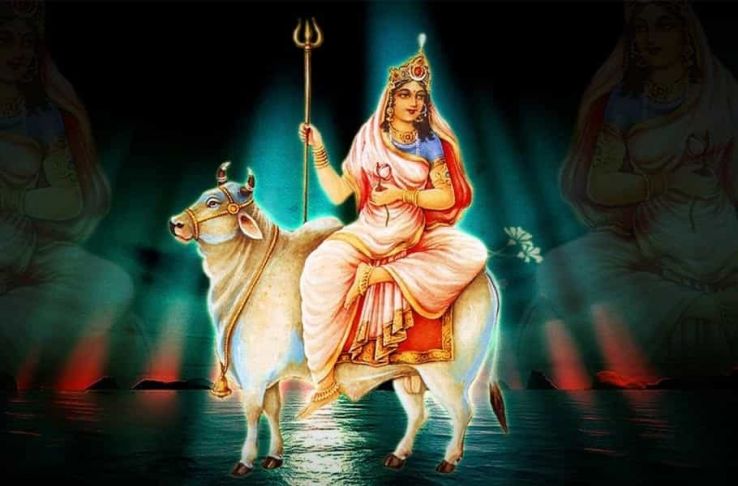
The first day is the day of the goddess Shailaputri. Shailputri means the daughter of the mountain. She is also called Bhavani, Sati, Parvati, and Hemwati. She is the embodiment of the power of the Trinity. The Goddess is embodied with a crescent moon on the forehead, a trident, and a lotus in the hands. She rides on a Nandi bull.
Colour To Wear: Orange is devoted to the goddess Shailaputri. It represents success, enthusiasm, and happiness.
2. Brahmacharini

The second day is dedicated to the goddess Brahmacharini. She is the symbol of penance and represents the female who practices Brahmacharya. She carries a Japa mala in her right hand and kamandal in her left. She endows her followers with grace, peace, and prosperity.
Colour To Wear: White is synonymous with virginity, purity, peace, and sacredness, and this colour is dedicated to the goddess.
3. Chandraghanta

The third day of the festival is devoted to Goddess Chandraghanta. She wears a half-moon on her forehead, which describes the etymology of her name. On this day, she is esteemed by the followers for tranquillity in life. She mounts on a tigress and has ten hands and three eyes.
Colour To Wear: the red colour is worn by the followers for fearlessness, passion, and sexuality.
4. Kushmanda
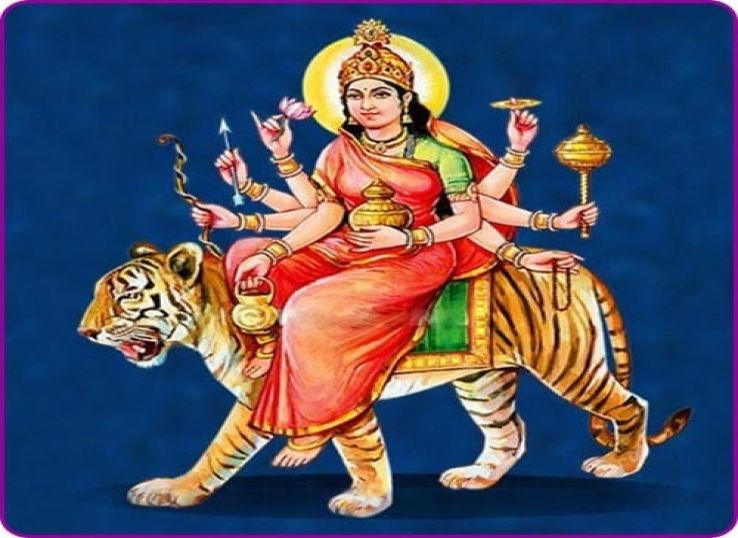
Devi Kushmanda has the power to live inside the blazing sun. Because of her luminous body and eight hands, she is known as Ashtabhuja Devi. She is seen riding on a tiger.
Colour To Wear: Royal blue should be worn on the day, which signifies richness and elegance.
5. Skandamata

The fifth day is dedicated to Skandamata- mother of the war God Skanda Kartikey. She rides a ferocious lion and carries Lord Skanda in her lap. She is depicted with four hands, a lotus flower in her upper two hands, one hand in Abhaya Mudra, and one hand in Skanda. She is pictured on a lotus and is referred to as Padamasani.
Colour To Wear: Yellow is the colour of the day, as it will keep you energized and cheerful.
6. Katyayani

The sixth form is Katyayani, also called Mahalaxmi. Katyayani was born to kill Mahishasura. Her characteristics are vengeance, anger, and victory over evils. She sits on a lion and has four hands: a sword and lotus in her left hands and rights in Abhaya Mudra and Varadamudra.
Colour To Wear: The green colour is related to new beginnings. It evokes a sense of growth and fertility.
7. Kalaratri

Goddess with a dark complexion, furious, and a fearless posture. Her red eyes and sticking blood tongue make her the Goddess of death. Also, she is called Kali and Kalratri. She is on a donkey, adorning scattered hair and three eyes.
Colour To Wear: Grey colour is worn on this day. It balances the energy and keeps the individuals down to earth.
8. Mahagauri

Mahagauri is the eighth form and the most graceful of the nine. As the Goddess of cleanliness, purity, endurance, and peace, she nullifies her worshippers' faults and mistakes.
Colour To Wear: one should wear purple, which exemplifies wealth, nobility, and power.
9. Siddhidatri

The goddess Siddhidharti possesses healing powers, sits in a happy pose, and has four hands. She journeys on a lotus, tiger, or lion.
Colour To Wear: on this day, you should wear a peacock green colour and manifest integrity, grace, and watchfulness.
10. How Navratri and Durga Puja are Celebrated?

Navratri is celebrated throughout India. The northern and western parts, chiefly Gujarat and Maharashtra, are marked by colourful Garba and Dandiya. Dandiya and Garba are folk dances of Gujarat, India, but they are now performed across the country and worldwide.
Dandiya involves two bamboo sticks, which the performers use to strike each other’s sticks rhythmically. Garba, instead, is performed in a circular formation around an idol of Goddess Durga. The dance reaches a crescendo with pacey steps.
Navratri concludes with Dussehra, which symbolises the victory of Lord Rama over Ravana and the victory of good over evil. Durga Puja is particularly prominent in West Bengal, where it is the most widely celebrated festival.
Interestingly, Durga Puja is dedicated to worshipping Durga. It spans five days and ends with Vijaya Dashami, which concludes with the immersion of the Durga idols in Ganga.
Goddess Durga, a manifestation of the divine energy or Shakti, depicts herself in the act of slaying Mahishasura. The Goddess is convoyed by her four children, Saraswati, Lakshmi, Kartikeya, and Ganesha, and there is a symbolic presence of several divine energies and agreement of the divine family. Each has its own significance, wealth, understanding, affluence, and well-being.
The pandals' central point is the idols of Durga and her companions, which are decorated with beautiful jewellery, clothing, and accessories.
The idols are mounted in pandals illuminated with lighting and artistic decorations. Pandals have innovative and intricate designs. Skilled artisans create beautiful structures using cloth, bamboo, clay, and decorative items. Each of the pandal is intended with a precise theme, inspired by history, mythology, art, or modern issues. The themes convey a message or induce a specific emotion.
Lighting is important in enhancing the appeal of pandals. Colourful LED lights, lanterns, and traditional lamps create a festive atmosphere.
People engross themselves in “pandal hopping,” where they visit numerous pandals to witness the different themes. Pandal hopping is a cultural tradition during Durga Puja, which also includes numerous cultural events involving dance, music, and drama.
Some people observe a fast throughout the Navratri and worship goddess Durga in her different forms. An ‘Akhanda Jyota’ is lit on the very first day and is continued throughout the nine days. In most of North India, food is made without onion and garlic, and non-vegetarianism and liquor consumption is not practised during the Navratri festival.
On the eighth and ninth days, little girls are worshipped as the forms of Goddess Durga, and Halwa, puri, and Chana Black Gram are made as Prasada. People also observe a pilgrimage to the cave temple of Mata Vaishno Devi Temple in Katra. It is believed that the goddess stayed in this cave for nine months when Bhairavnath followed her.
11. Significance of Shakti Peethas

The Shakti Peethas are places of worship dedicated to Shakti. If the scriptures are to be believed, there are 51 Peethas, and these are places where the body parts of Sati fell. Hence, the Shakti Peethas formed. These are pilgrimage destinations blessed with the presence of Shakti.
Sati was an incarnation of Adi Shakti and the first wife of Shiva. After Sati’s self-sacrifice, Shiva carried Sati’s body out of sorrow and performed the Tandava, the dance of destruction, across the universe.
The dance triggered destruction, and the Gods approached Vishnu to intervene. Vishnu cut through Sati’s corpse with his Sudarshan Chakra. Different body parts fell at several places. Where the body parts fell, that place became a Shakti Peetha. All the Shakti Peethas have Shakti as the deity accompanied by her consort, Lord Bhairava.
12. Adi Shakti Peethas
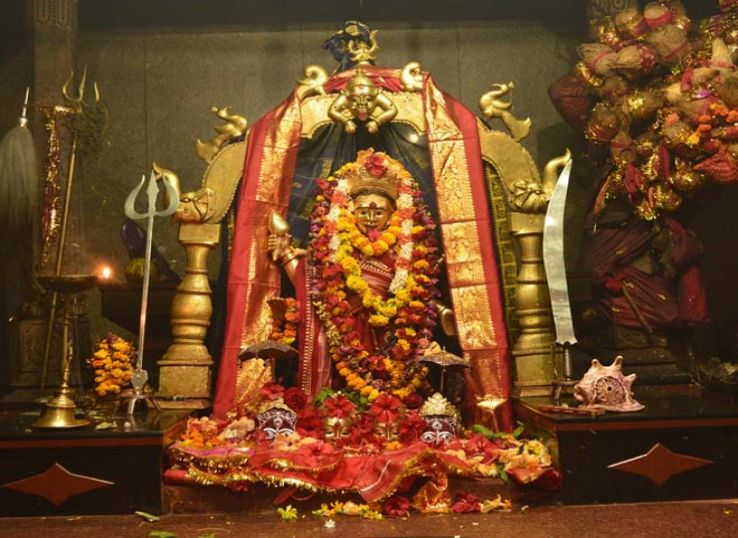
There are four famous temples called the Adi Shakti Peethas. They are the most sacred of all the others. The Kamakhya temple, the Dashineshwar temple, the Tara Tarini temple, and the Bimala temple are the most auspicious ones.
In Navratri, you can also plan a visit to the Shakti peethas, and for this, you can look at the travel packages to these places
Recommended For You
-
 Best Places to Stay During Kumbh 2025: From Tents to Luxury Hotels
Best Places to Stay During Kumbh 2025: From Tents to Luxury Hotels
-
 The Ultimate Guide to Maha Kumbh Mela 2025 at Prayagraj
The Ultimate Guide to Maha Kumbh Mela 2025 at Prayagraj
-
 Understanding the Importance of the Sangam: The Confluence of Faith
Understanding the Importance of the Sangam: The Confluence of Faith
-
 The History and Mythology of Kumbh Mela: A Journey Through Time
The History and Mythology of Kumbh Mela: A Journey Through Time
-
 Best Places to Eat in Goa: Indulge in a Culinary Delight
Best Places to Eat in Goa: Indulge in a Culinary Delight
-
 The Future of Drone Tourism: How Drones are Changing the Travel Industry
The Future of Drone Tourism: How Drones are Changing the Travel Industry
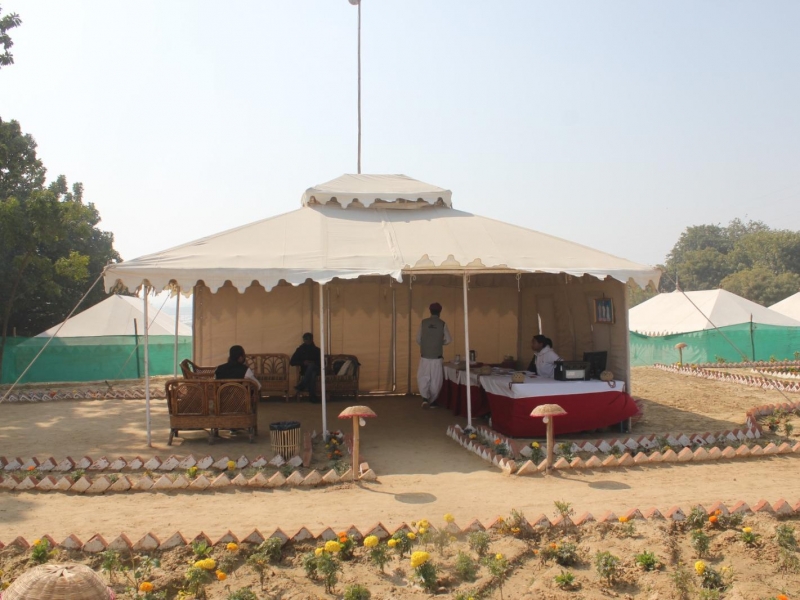
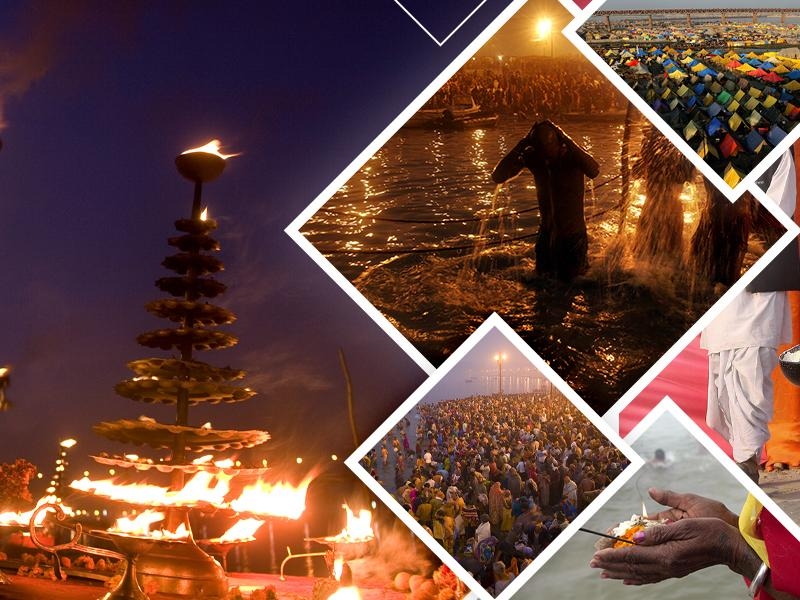





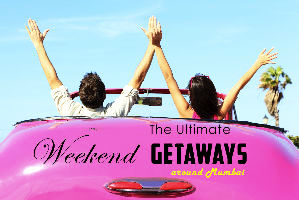




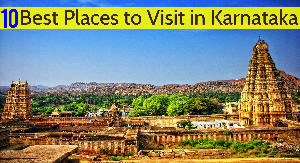


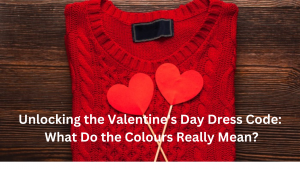

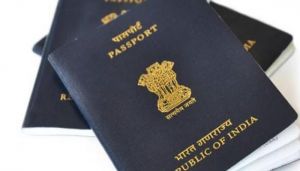

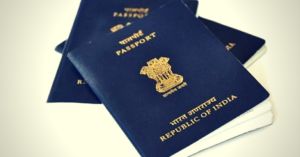


Author Bio